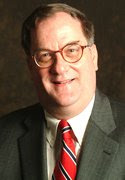Some critics have slammed Poizner for not portraying every student as eager and academically prepared. On the contrary, I find that this candidness is a strength of the book:
One personal insight that Poizner comes to is how difficult it can be to boost student achievement. He arrives at Mount Pleasant High School somewhat romantic about what one teacher can accomplish for children who have been in weak schools for years.
He never lets go of the goal of bringing out his students' full potential, but comes to recognize that many of them are missing the academic "background knowledge" and scholastic aspirations that many students have in upper-middle-class schools. He courageously faces these politically incorrect facts and the extra work they necessitate, without ever giving up in the least on his students.
Some of the critics have focussed on whether San Jose's Mount Pleasant High School was rough or whether the surrounding neighborhood was rough:
Even though this school and surrounding neighborhood seemed rather rough and dangerous to Poizner,...in fact, the neighborhood is average for San Jose and that, while there are third-generation gangs in the neighborhood and "gang-intervention specialists" at Mount Pleasant High School, the number of fights among students is not dramatically high.
While making points such as these, radio journalist Ira Glass, a major critic of Poizner's book, acknowledges that "some things about the school could clearly be better," when it comes to academics. Glass notes: "The school doesn't hit its goals in statewide testing." It is in the bottom 40 percent of California schools.
The book is primarily about Poizner's personal experience as a teacher, but it contains policy suggestions as well:
Poizner finds the public schools a bureaucratic morass, with too many details dictated from the state Capitol. This red tape constrains principals and teachers, the educators who could be making teaching and learning happen.
Poizner's solution is to empower educators by cutting Education Code red tape and reforming school finance so that decisions about money are made close to the classroom. At the same time, he wants incentives that will encourage educators to put student learning first....
He likes charter schools because they by definition aren't tied down by red tape and can provide competitive pressure and examples to learn from for regular schools. He wants to have teachers treated "like professionals." He wants to give "great teachers great pay" and hold all teachers "accountable for their work." Poizner is not afraid to say that ineffective teachers "should be dismissed."

